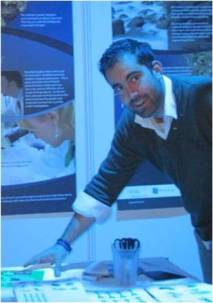 Creativity has become an important goal for science education in the last decades.
Creativity has become an important goal for science education in the last decades.
Traditionally science and math education dismissed creativity. It was stated that creative thinking was secondary to the acquisition of established procedures and that it was a distraction from the purpose of science education.
Ideally it was valued, just not for science; it had no relevance in science, it should be something developed in the Arts. This is somewhat related with an objectivist view of science teaching (i.e. teaching the right answers to the right questions) in which science education is about teaching the laws and principles of science, the fixed and permanent body of science.
The fact is that in today’s society, a view of this type does not suffice. In the skill sets required by scientific and technological organizations you will find always creative thinking and creative problem solving. It is common to hear that just doing a set of tasks is not enough anymore. As the Dermot Hughes, of Erikson Athlone, stated in last years’ Atlantic corridor conference:
“The key issue is innovation, we don´t want people that just do assignments. You want them to be autonomous, confident communicators, and that know how to work collaboratively”
This clearly cannot be fostered in a school science education that dismisses creativity. Henceforth it is getting more common to see in the science education literature projects that foster creative thinking in the classroom. But what does it mean to be creative in the classroom? A science education researcher has defined it in the following way:
“Children are creative when constructing meaning, explanations, hypothesis and procedures that are new to them”
A way in which creative thinking is, then, being developed in science education is through inquiry learning methods, in which students investigate scientific problems related to the curriculum they need to learn. But even when using inquiry learning is not easy for teachers to foster to a maximum creative thinking. Teachers, due to several constraints (e.g. curriculum, time, exams) need to frame inquiry learning to specific pre-determined activities (investigations) and do not leave space for students to embark in their own divergent thinking. And let’s be honest, these are very valid and relevant constraints. That is why it is important that these changes are made at a school level in which interdisciplinarity is a key component. Former President Clinton, in a very recent talk, gives a very engaging example of a change of this kind:
“former President Bill Clinton made headlines in his home state of Arkansas discussing education. His message was one that many of us already know: the dropout rate is increasing and students are leaving school unprepared for 21st century jobs. However, the uniqueness of the President’s message was in his proposed solution—the arts. Clinton is endorsing a program called A+ Schools that achieves whole school reform by integrating the arts, using project-based learning, and appealing to students’ multiple intelligences. “
 Creativity has become an important goal for science education in the last decades.
Creativity has become an important goal for science education in the last decades.